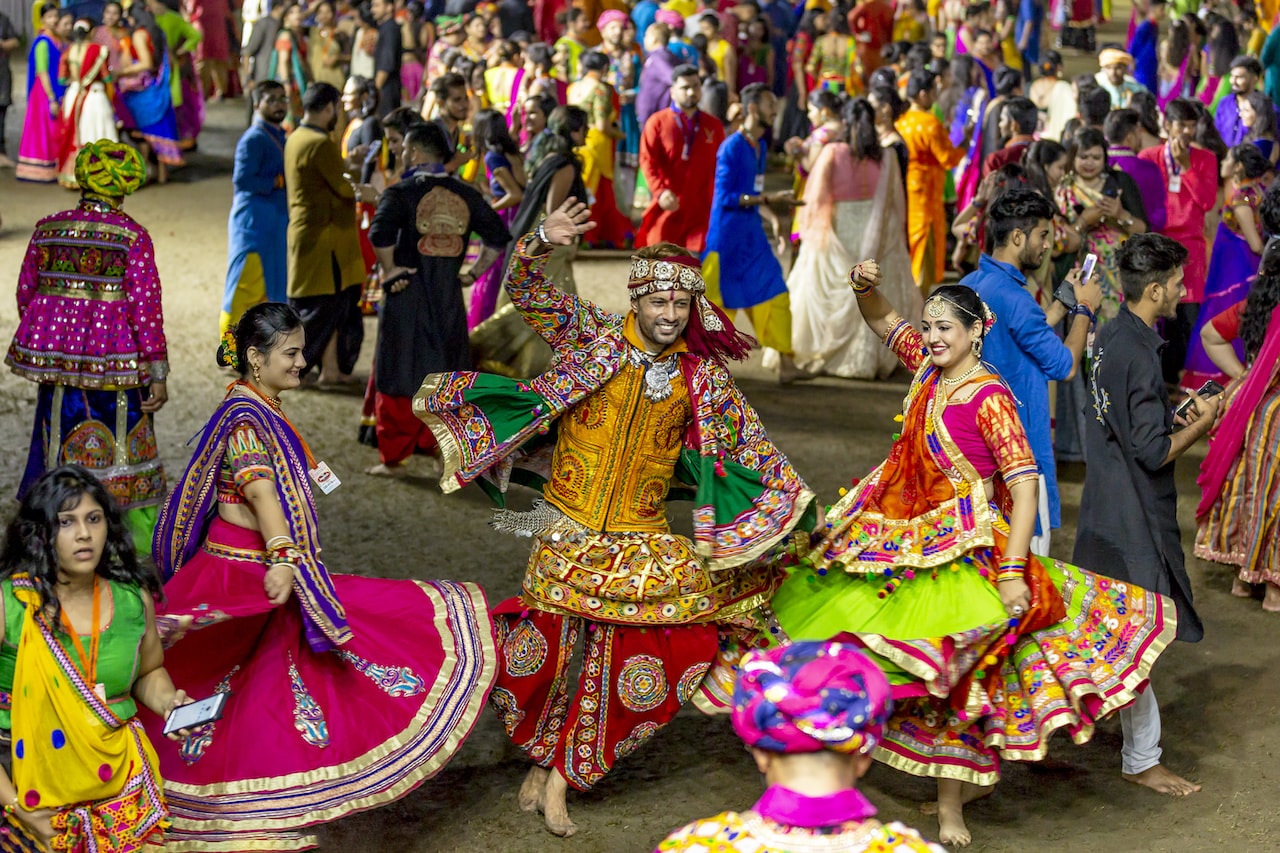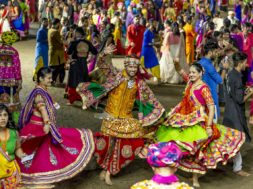
Festivals: Navratri is dedicated to all the nine forms of Goddess Durga
New Delhi: The description of Gujarat festivals is incomplete without the mention of Navratri. Celebrated for nine long days with huge pomp and show, Navratri is dedicated to all the nine forms of Goddess Durga. Communities come together to dance in unison during Garba, a seemingly simple dance, where the crowd moves together in a synchronized circular movement.
Navratri means ‘Nine Nights,’ the festival is commemorated for nine long days to perform a Puja to one of the nine forms of the Goddess. All the nine nights are broken up into sections of three; the first three days are for Goddess Durga, who destroyed Demon Mahishasura and also human impurities. The next three days are committed to the goddess Lakshmi, the goddess of spirituality, and the last three days are for Goddess Saraswati, the goddess of wisdom and art.
Also, Navratri is the time to celebrate soil fertility and monsoon harvest, represented by a mound of fresh soil grown in which grains are sown. The soil is worshiped and watered for all nine days of the festival. On the tenth day, Vijayadashami is celebrated. Puja is done to bless vehicles; also it is considered as an auspicious day to purchase one. Multiple fables and tales link the origin of the festival. The story goes like this: Demon Mahishasur honored a boon to be immortal by Agni, God of Fire.
As per the boon, Mahishasur wouldn’t be killed and wounded by any weapon. As a result, Mahishasur became so powerful that he created terror in the mind of people and caused destruction. To end the terror of the demon Mahishasur, all the deities went to Lord Shiva to find a solution. Lord Shiva along with the power of other divinities created the goddess Adhya Shakti. All the gods and goddesses, including Lord Shiv, gave her ornaments, weapons, and a lion as a vehicle to fight against the Mahishasur. Goddess Adhya Shakti fought against Mahishasur for nine long days and nights. On the tenth day, she beheaded Mahishasur. The nine nights came to be known as Navratri while the tenth day was called Vijaya Dashami, the tenth day that brought the triumph of good over evil.
Apart from religious and traditional significance, during these nine days, people show their best moves and do the Garba and dandiya. One can hear the constant noise of sticks and dhols all over Gujarat for nine long days. On all days, an evening aarti is performed in which Garbi, a tradition earthen a port with diyas is used that signifies prosperity. After the arti, all the people gather and put their best foot forward for the Garba and dandiya dance. Garba is a dance form in which the crowd moves together in a synchronized circular movement. Ashapura Mata-no-Madh in Kutch, Khodiyar Mandir near Bhavnagar, and Chamunda Mata Mandir at Chotila on the Ahmedabad-Rajkot National Highway are some of the major temples in Gujarat that host the best Navratri festival. Seeing people dancing in tune with outfits of gold and silk is a sight to behold.













